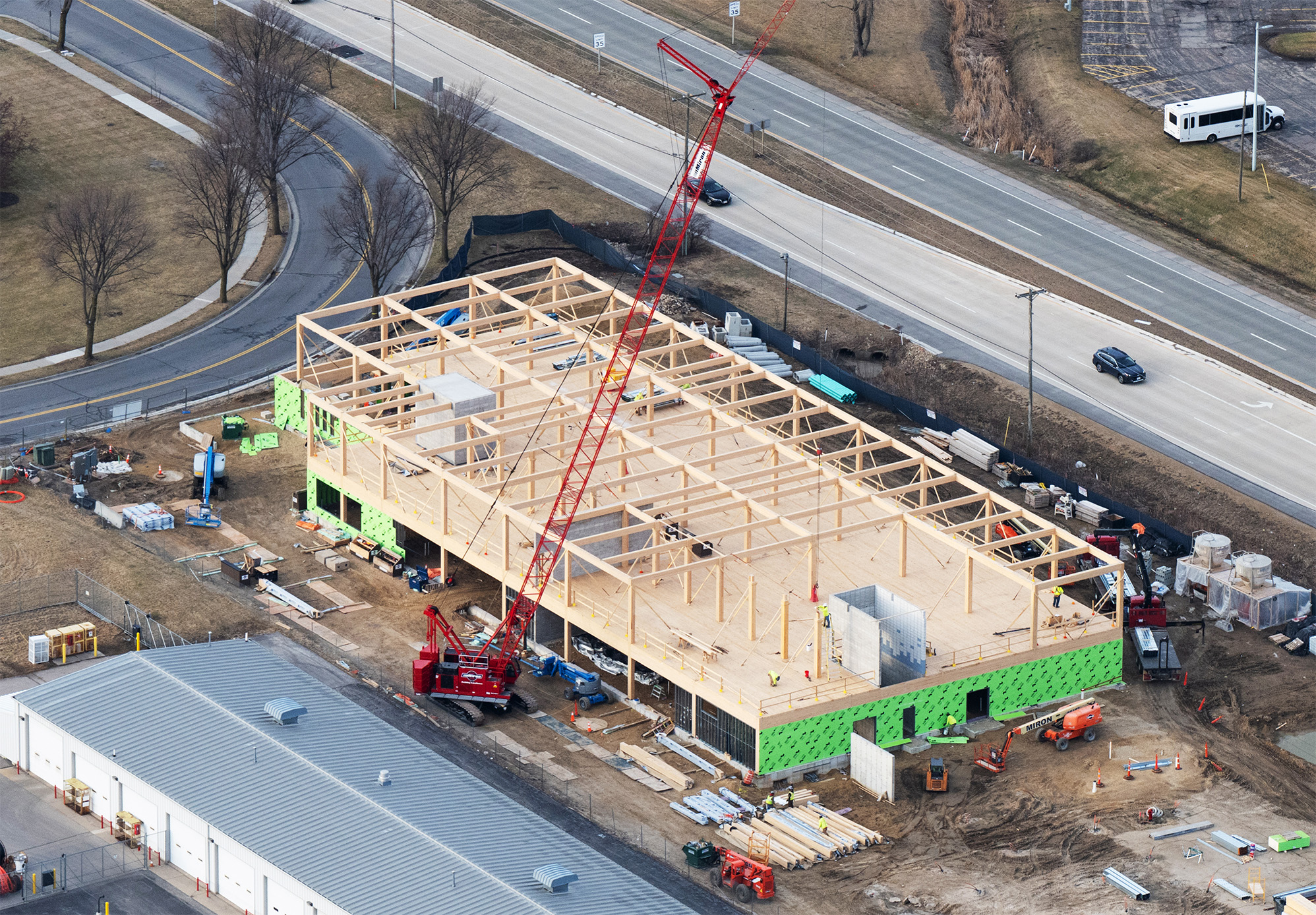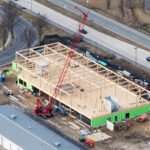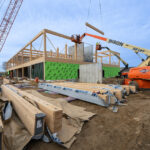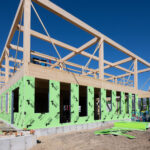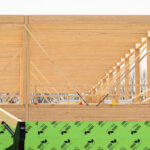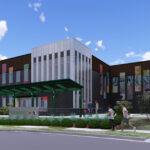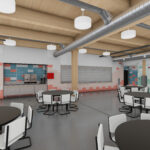The Bartillon Shelter represents a first-of-its-kind initiative for the City of Madison – a purpose-built, permanent men’s shelter designed to provide dignified, supportive housing for up to 250 residents. Developed by the City of Madison in collaboration with Dane County, this two-story, 40,000-square-foot civic facility integrates sustainable mass timber construction and community-driven design principles to address the evolving needs of unhoused individuals in the region.
Mercer Mass Timber supplied a total of 798 m³ of Southern Yellow Pine (SYP) mass timber for this project, including:
- CLT (cross-laminated timber): 484 m³
- Glulam Beams & Columns: 314 m³
Biophilic Design & Human-Centered Impact
Beyond sustainability, the use of exposed wood throughout the shelter brings inherent biophilic benefits – promoting warmth, reducing stress, and contributing to a sense of calm. For individuals navigating homelessness and the trauma often associated with it, the shelter’s natural finishes offer a soft landing – a comforting contrast to institutional environments. Research continues to show that natural materials like wood can improve mental health outcomes, which aligns with the project’s trauma-informed approach.
Logistical & Technical Coordination
As of early 2025, MMT has completed foundational deliveries and is actively coordinating with the GC and trades on site to install the Southern Yellow Pine mass timber system. Installation is being sequenced alongside building enclosure to maintain schedule continuity through winter. MMT’s VDC team provided early modeling support and connection detailing to support shop drawings and expedite fabrication.
Community Impact
The Bartillon Shelter marks a pivotal step forward in Madison’s efforts to address homelessness with empathy and intention. With integrated support services, accessible amenities, and trauma-informed design, the shelter prioritizes dignity and stability. Public engagement was central to the design process, with multiple rounds of feedback from service providers, people with lived experience, and local residents.
